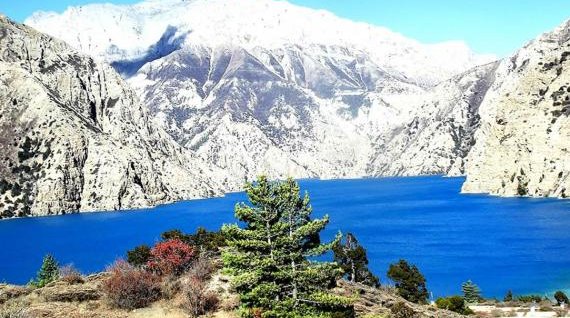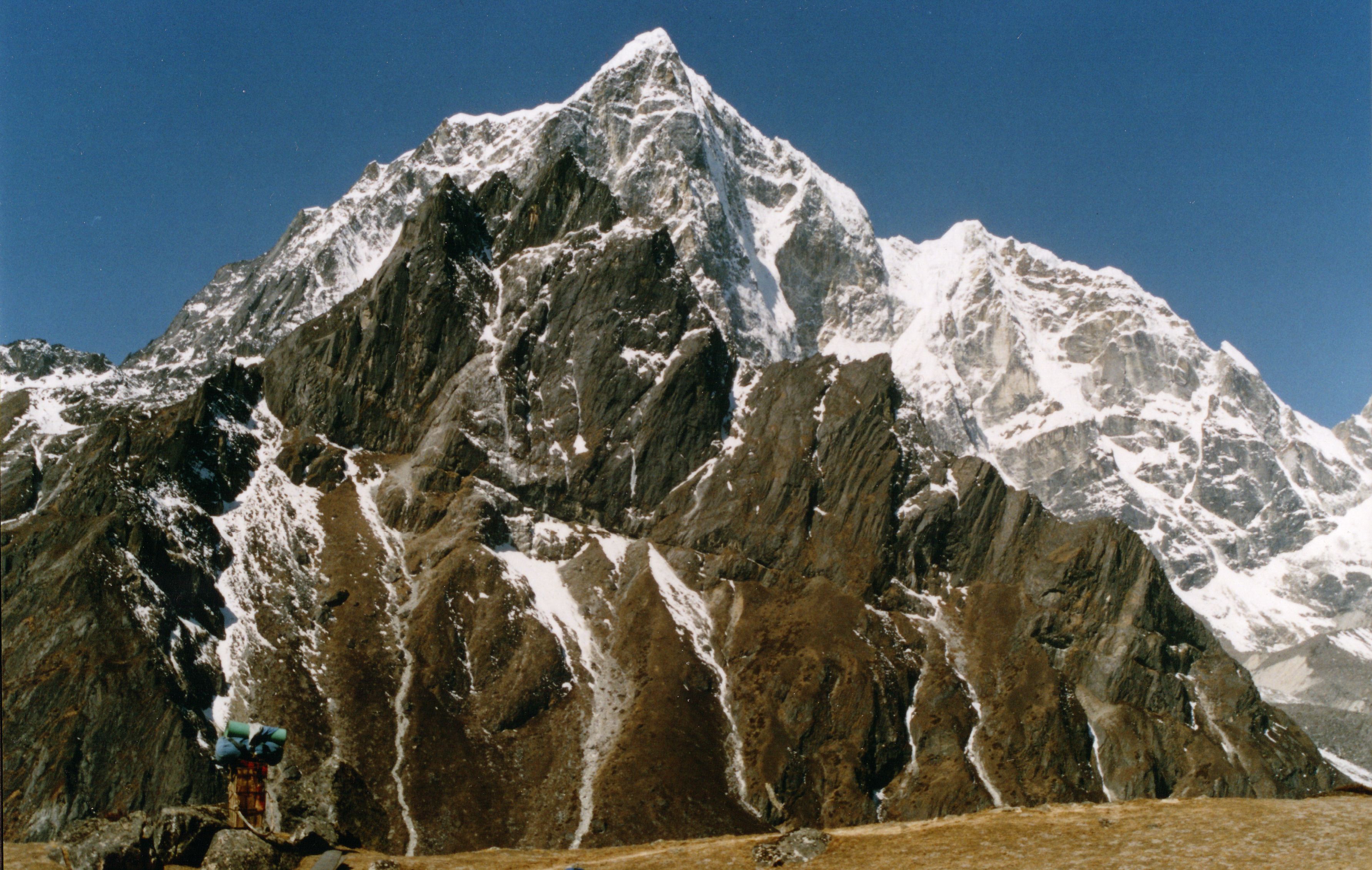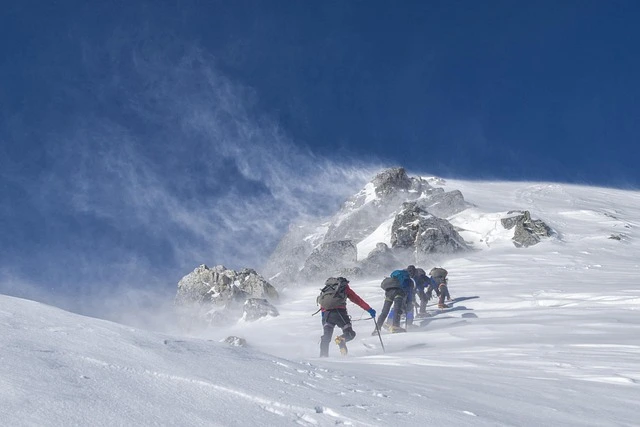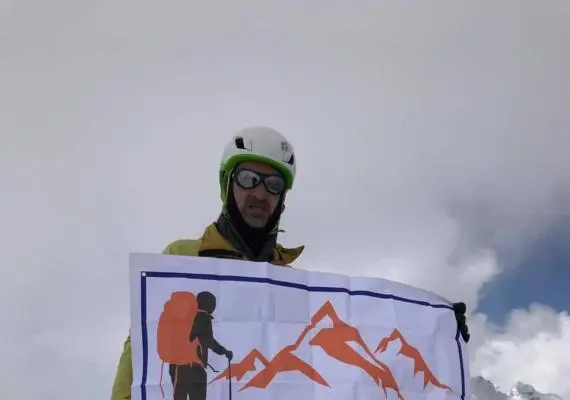The Upper Mustang Trek takes you to one of the most remote and culturally preserved regions in the Himalayas, often called the "Last Forbidden Kingdom" of Nepal. This extraordinary journey through the trans-Himalayan desert landscape reveals ancient Tibetan Buddhist culture, medieval walled cities, and dramatic mountain vistas that few travelers ever witness.
Unlike popular trails in the Everest or Annapurna regions, Upper Mustang remained closed to outsiders until 1992, preserving its unique Loba culture and pristine landscapes. Today, this restricted area offers adventurers a rare glimpse into an ancient kingdom where time seems to have stopped, complete with cave monasteries, royal palaces, and windswept plateaus reminiscent of Tibet itself.
Trip Highlights
- Explore the walled city of Lo Manthang, the 600-year-old capital of the former Lo Kingdom
- Visit ancient cave monasteries including Chungsi Cave and Tashi Kabum
- Experience authentic Tibetan Buddhist culture and meet the hospitable Loba people
- Trek through dramatic desert landscapes in the rain-shadow region of the Himalayas
- Witness spectacular views of Dhaulagiri, Nilgiri, and Annapurna mountain ranges
- Discover mysterious sky caves and ancient Buddhist murals at Luri Gompa
- Cross the scenic Chogo La Pass at 4,280 meters
- Walk along the world's deepest gorge - the Kali Gandaki Valley
- Collect sacred Shaligram stones (fossilized ammonites) from riverbanks
- Stay in traditional tea-house lodges and experience local hospitality
Short 16-Day Itinerary Overview
- Day 1: Fly Kathmandu to Pokhara (820m) - 25 minutes flight
- Day 2: Fly Pokhara to Jomsom (2,720m), trek to Kagbeni (2,840m) - 3 hours
- Day 3: Kagbeni to Chele (3,050m) - 6 hours
- Day 4: Chele to Syangboche (3,475m) - 6-7 hours
- Day 5: Syangboche to Ghami (3,520m) - 5-6 hours
- Day 6: Ghami to Charang (3,500m) - 5 hours
- Day 7: Charang to Lo Manthang (3,840m) - 5 hours
- Day 8: Explore Lo Manthang - visit monasteries and palace
- Day 9: Day hike to Chungsi Cave and surrounding areas
- Day 10: Lo Manthang to Drakmar (3,810m) - 6-7 hours
- Day 11: Drakmar to Ghiling (3,806m) - 5-6 hours
- Day 12: Ghiling to Chhuksang (3,050m) - 5-6 hours
- Day 13: Chhuksang to Jomsom (2,720m) - 6-7 hours
- Day 14: Fly Jomsom to Pokhara - morning flight
- Day 15: Drive/fly Pokhara to Kathmandu
- Day 16: Departure day
Why Choose Upper Mustang: A Journey Unlike Any Other
The Upper Mustang region offers something truly extraordinary in Nepal's trekking landscape. While most treks lead through lush valleys and rhododendron forests, this restricted area trek transports you to an entirely different world - a high-altitude desert where red cliffs tower above ancient villages and prayer flags flutter against impossibly blue skies.
The trek begins with a spectacular flight from Pokhara to Jomsom, following the Kali Gandaki Gorge between the towering peaks of Dhaulagiri and Annapurna. From Jomsom, you'll enter the restricted area at Kagbeni, a charming medieval village that serves as the gateway to Upper Mustang. Here, your Restricted Area Permit (RAP) becomes essential, as this special permit allows access to the culturally sensitive region beyond.
The Cultural Treasure of Lo Manthang
At the heart of your Upper Mustang Trek lies Lo Manthang, the walled city that served as the capital of the independent Kingdom of Lo until 2008. This remarkable settlement, surrounded by whitewashed walls and home to about 150 houses, represents one of the best-preserved examples of Tibetan culture outside of Tibet itself.
The Loba people living here maintain their traditional lifestyle, speaking Tibetan and following ancient customs that have remained unchanged for centuries. During your exploration of Lo Manthang, you'll visit the Royal Palace (though the king no longer holds political power, he remains a respected cultural figure), ancient monasteries like Jampa Lhakhang and Thubchen Gompa, and witness daily life in this extraordinary mini Tibet.
The city's three main temples contain priceless Buddhist art, including massive clay statues of Buddha and intricate mandala paintings that date back over 500 years. Local monks still perform daily rituals here, and if you're fortunate, you might witness traditional ceremonies or festivals that showcase the deep spiritual roots of Loba culture.
Ancient Caves and Hidden Monasteries
One of the most intriguing aspects of the Upper Mustang Trek is the opportunity to explore ancient cave complexes that dot the landscape. The Chungsi Cave monastery, perched dramatically on a cliff face near Lo Manthang, requires a steep climb but rewards visitors with stunning views and ancient meditation chambers where hermits once sought enlightenment.
The Tashi Kabum cave complex represents another fascinating site, featuring natural formations that locals believe represent Buddhist deities. These sacred caves have served as meditation retreats for centuries, and the spiritual energy within them is palpable. Many contain ancient murals and religious artifacts that provide insight into the region's rich Buddhist heritage.
Perhaps most mysterious are the thousands of man-made caves carved into cliff faces throughout Upper Mustang. Some, like those at Luri Gompa, contain exquisite 14th-century murals depicting Buddhist deities and mandala designs. Archaeological evidence suggests these caves served various purposes over millennia - from burial chambers to living quarters to meditation retreats.
The Trans-Himalayan Landscape
The geography of Upper Mustang sets it apart from any other trek in Nepal. This trans-Himalayan desert landscape, lying in the rain-shadow region behind the Annapurna and Dhaulagiri ranges, receives less than 200mm of rainfall annually. The result is a dramatic moonscape of eroded cliffs, deep ravines, and colorful rock formations that seem transported from another planet.
As you trek through this arid terrain, you'll encounter unique geological features including the red cliffs near Drakmar (said to be stained with the blood of demons defeated by Guru Rinpoche) and numerous mani walls covered with carved stones bearing the sacred mantra "Om Mani Padme Hum." The landscape constantly shifts between barren hills and surprising oases where villages cluster around precious water sources.
The trek reaches its highest point at Chogo La Pass (4,280m), where prayer flags mark the crossing point and panoramic views stretch across the Tibetan plateau to the north and the snow-capped Himalayas to the south. On clear days, you can see Dhaulagiri (8,167m), Nilgiri (7,061m), and various peaks of the Annapurna range creating a stunning backdrop to your journey.
Practical Aspects: Permits and Regulations
Trekking in Upper Mustang requires careful planning due to its restricted area status. The Restricted Area Permit (RAP) costs USD 500 per person for the first 10 days, with an additional USD 50 per day thereafter. This permit must be obtained through a registered trekking agency in Kathmandu and requires a minimum of two trekkers traveling together.
In addition to the RAP, you'll need an Annapurna Conservation Area Permit (ACAP) costing NPR 3,000 (approximately USD 30) and a TIMS card (Trekkers Information Management System) costing NPR 2,000 (approximately USD 20). These permits help fund conservation efforts and ensure trekker safety in the region. Your trekking agency typically handles all permit arrangements as part of their Upper Mustang tour package.
The restricted area regulations also mandate that all trekkers be accompanied by a registered guide. This requirement actually enhances your experience, as local guides provide invaluable cultural insights and help navigate the sometimes unclear trails across the desert landscape.
Accommodation and Meals on the Trail
Unlike more developed trekking routes, accommodation in Upper Mustang consists primarily of basic tea-house lodges run by local families. These traditional guesthouses offer twin-bedded rooms with shared bathroom facilities. While simple, they provide authentic cultural experiences and warm hospitality that makes up for any lack of luxury.
Meals along the trail typically include dal bhat (rice and lentils), noodle soups, momos (dumplings), and Tibetan bread. In Lo Manthang and larger villages, you'll find more variety including pasta dishes and even apple pie - a legacy of the region's famous apple orchards. Most Upper Mustang Trek cost packages include three meals per day, ensuring you're well-fed throughout your journey.
It's worth noting that due to the remote location, prices for food and beverages increase as you climb higher. A comprehensive trek package helps manage these costs effectively while supporting local communities who rely on tourism for their livelihood.
Unique Cultural Experiences
The cultural immersion possible on the Upper Mustang Trek surpasses most other Himalayan journeys. The Loba people, ethnically Tibetan and religiously Buddhist, maintain traditions that have evolved in isolation for centuries. You'll witness daily practices like prayer wheel spinning, butter lamp offerings, and the creation of intricate sand mandalas during religious festivals.
If your trek coincides with the Tiji Festival (usually in May), you'll experience one of the most important cultural events in Lo Manthang. This three-day festival features masked dances that tell the story of good triumphing over evil, with monks in elaborate costumes performing ancient rituals believed to bring prosperity to the region.
Throughout your trek, you'll encounter evidence of the pre-Buddhist Bon religion, which still influences local customs. Ancient symbols, ritual practices, and sacred sites dedicated to Bon deities add another layer to the region's complex spiritual landscape.
Wildlife and Natural Wonders
Despite its harsh environment, Upper Mustang supports surprising biodiversity. Blue sheep graze on sparse vegetation, while golden eagles and Himalayan griffons soar overhead. Lucky trekkers might spot snow leopard tracks in higher regions, though actual sightings remain extremely rare.
The Kali Gandaki Gorge, which you'll follow for portions of the trek, holds special significance as one of the world's deepest gorges and a source of sacred Shaligram stones. These black fossilized ammonites, found in the riverbed, are revered by Hindus as representations of Vishnu and make meaningful souvenirs when collected respectfully.
The region's unique flora includes hardy plants adapted to extreme conditions - cushion plants, dwarf rhododendrons, and medicinal herbs used in traditional Tibetan medicine. Spring brings splashes of color as wildflowers bloom briefly in the desert, while autumn paints the few deciduous trees in brilliant golds and reds.
Trekking Logistics and Package Inclusions
A well-organized Upper Mustang Trek package typically includes comprehensive services to ensure a smooth journey. Standard inclusions cover:
- Domestic flights (Kathmandu-Pokhara-Jomsom and return)
- All necessary permits (RAP, ACAP, and TIMS)
- Experienced English-speaking guide and porter services
- Full board meals during the trek (breakfast, lunch, dinner)
- Tea-house lodge accommodation throughout
- First-aid kit and emergency evacuation arrangements
- Transportation between airports and hotels
Professional trekking companies also provide pre-trek briefings, equipment checks, and can arrange gear rental if needed. Many packages include cultural sightseeing in Kathmandu and Pokhara, adding value to your overall Nepal experience.
Upper Mustang Trek Cost Breakdown
Understanding the Upper Mustang Trek cost helps you budget effectively for this unique adventure. Unlike standard Nepal treks, the restricted area status and remote location make Upper Mustang more expensive, but the extraordinary experience justifies the investment.
Permit Costs
The largest single expense is the Restricted Area Permit (RAP):
- RAP permit cost: USD 500 per person for the first 10 days
- Additional days: USD 50 per person per day after 10 days
- ACAP permit: NPR 3,000 (approximately USD 30)
- TIMS card: NPR 2,000 (approximately USD 20)
These permits alone total approximately USD 550 per person, forming the foundation of your Upper Mustang Trek cost.
Complete Package Pricing
Professional Upper Mustang tour packages typically range from USD 2,500 to 3,500 per person for a 16-day trek, depending on service level and group size. This investment includes:
Transportation
- Domestic flights: Kathmandu-Pokhara-Jomsom (round trip) - USD 400-500
- Airport transfers and ground transportation - USD 50-80
- Alternative overland options can reduce costs but add travel days
Accommodation and Meals
- Tea-house lodges throughout trek: USD 5-10 per night
- Three meals daily: USD 25-35 per day
- Accommodation in Kathmandu/Pokhara: USD 30-50 per night (3-4 star hotel)
Guide and Porter Services
- Licensed trekking guide: USD 30-40 per day
- Porter (carries up to 25kg): USD 20-25 per day
- Guide/porter insurance and equipment: USD 50-100 total
Additional Package Inclusions
- Company service charges and taxes
- First-aid kit and emergency arrangements
- Trekking map and company duffel bag
- Welcome and farewell dinners
Budget Considerations
When calculating your total Upper Mustang Trek cost, factor in these additional expenses not typically included in packages:
Personal Expenses
- International flights to/from Nepal: Varies by origin
- Nepal tourist visa: USD 50 for 30 days
- Travel insurance (mandatory): USD 100-200
- Personal trekking gear: USD 200-500 if purchasing new
- Gear rental in Kathmandu: USD 2-5 per item per day
On-Trek Expenses
- Hot showers: USD 3-5 per shower
- Charging electronics: USD 2-5 per hour
- Bottled water: USD 2-5 per liter (increases with altitude)
- Snacks and drinks: USD 50-100 total
- Wi-Fi access (limited availability): USD 5-10 per day
Tips and Gratuities
- Guide: USD 10-15 per day (group collection)
- Porter: USD 7-10 per day (group collection)
- Kitchen staff: USD 50-100 per group
Cost-Saving Strategies
While Upper Mustang remains one of Nepal's more expensive treks, these strategies can help manage costs:
- Join a larger group: Per-person costs decrease with more participants sharing guide and fixed expenses
- Book in advance: Early booking often secures better rates and availability
- Travel in shoulder seasons: Late autumn or early spring may offer slight discounts
- Bring water purification: Tablets or filters reduce bottled water expenses significantly
- Limit electronic charging needs: Bring power banks instead of paying for daily charging
Value Proposition
The Upper Mustang Trek cost reflects the unique value of accessing this restricted region:
- Exclusive access to a preserved Tibetan culture
- Limited tourist numbers ensuring authentic experiences
- Direct contribution to local conservation and development
- Professional support in a remote, challenging environment
- Once-in-a-lifetime cultural and scenic experiences
Sample Budget Breakdown (Per Person)
Basic Package (USD 2,500)
- All permits: USD 550
- Domestic flights: USD 400
- Guide/porter services: USD 600
- Accommodation/meals: USD 750
- Company operations: USD 200
Comfort Package (USD 3,000)
- Includes basic package elements
- Better accommodation in cities
- More experienced senior guide
- Additional cultural activities
- Comprehensive insurance coverage
Premium Package (USD 3,500)
- All comfort package features
- Private trip with flexible itinerary
- Premium accommodation where available
- Additional acclimatization days
- Extra porter for comfort
Booking and Payment
Most operators require:
- 20-30% deposit upon booking confirmation
- Full payment 30-60 days before departure
- Payment methods: Bank transfer, credit cards, or cash in Kathmandu
- Clear cancellation and refund policies
- Trip insurance strongly recommended
The Upper Mustang Trek cost represents excellent value when considering the exclusive access, comprehensive services, and life-changing experiences included. While more expensive than popular routes like Annapurna Circuit, the investment opens doors to one of Earth's last cultural frontiers, making every dollar spent worthwhile for this extraordinary Himalayan adventure.
Fitness Requirements and Acclimatization
While the Upper Mustang Trek doesn't reach extreme altitudes compared to Everest Base Camp, proper fitness and acclimatization remain crucial. The highest overnight stop is Lo Manthang at 3,840m, with passes reaching 4,280m. The trek involves 5-7 hours of walking daily over varied terrain including steep climbs and descents.
Recommended preparation includes cardio exercises, hiking with a loaded backpack, and strength training focusing on legs and core. The itinerary builds in gradual altitude gain, but listening to your body and staying hydrated helps prevent altitude sickness. Most trekkers find the pace manageable with reasonable fitness levels.
Best Seasons for Upper Mustang Trek
Unlike most Nepal treks, Upper Mustang's location in the rain-shadow makes it accessible even during monsoon months (June-August). However, the best seasons remain:
Spring (March-May): Clear skies, moderate temperatures, and possible Tiji Festival viewing make this an ideal time. Wildflowers bloom in lower regions, and snow on high passes usually clears by April.
Autumn (September-November): Post-monsoon clarity offers the best mountain views, with stable weather and comfortable temperatures. This season sees more trekkers but never feels crowded due to permit restrictions.
Summer (June-August): While the rest of Nepal experiences heavy monsoon rains, Upper Mustang remains relatively dry. This unique weather pattern makes it one of the few areas suitable for summer trekking.
Winter (December-February): Possible but challenging due to extreme cold and potential snow blocking high passes. Some tea-houses close during the coldest months.
Packing Essentials for Upper Mustang
The unique climate of Upper Mustang requires careful packing consideration. Essential gear includes:
Clothing: Layering system with base layers, insulating jacket, windproof/waterproof outer shell, trekking pants, sun hat, warm beanie, gloves
Footwear: Sturdy trekking boots, camp shoes, quality socks
Protection: Sunglasses (high UV protection), sunscreen (SPF 50+), lip balm with SPF, buff or scarf for dust protection
Equipment: Sleeping bag (-10°C rated), trekking poles, headlamp, water bottles or hydration system
Personal Items: Basic first-aid supplies, toiletries, wet wipes, hand sanitizer, toilet paper
Electronics: Camera with extra batteries (cold drains power), power bank, adapter plugs
The arid environment and strong winds make sun protection and dust management particularly important. Many trekkers underestimate the intensity of high-altitude sun exposure in the desert landscape.
Conservation and Responsible Tourism
The fragile ecosystem and unique culture of Upper Mustang require conscious conservation efforts. The high permit fees directly support local development and heritage preservation projects. Visitors can contribute by:
- Respecting local customs and dress codes
- Minimizing plastic waste by using refillable water bottles
- Supporting local businesses and buying authentic handicrafts
- Never removing artifacts or damaging archaeological sites
- Following designated trails to prevent erosion
- Respecting photography restrictions in monasteries
The limited number of permits issued annually helps preserve the region's character while providing sustainable income for local communities. This balance between tourism and conservation makes Upper Mustang a model for responsible travel in sensitive areas.
Alternative Ways to Explore the Mystical Mustang Region
The remote Mustang region, known as the "Forbidden Kingdom," offers adventurers multiple exploration options beyond traditional trekking. While the classic Upper Mustang Trek provides an immersive walking experience through ancient Tibetan culture and dramatic desert landscapes over 10-14 days, modern adventurers can now choose faster, equally thrilling alternatives.
The adventure tour to the Forbidden Kingdom presents an exhilarating motorbike journey through the same mystical terrain in just 7-9 days. This motorized expedition allows travelers to cover vast distances across the trans-Himalayan desert, reaching remote monasteries, ancient caves, and the walled city of Lo Manthang while experiencing the same cultural richness as trekkers. The motorbike tour suits adventure enthusiasts seeking time efficiency without compromising on authentic Mustang experiences, offering comfortable lodge accommodations and expert local guides who ensure both safety and cultural immersion in this restricted Himalayan kingdom.
Booking Your Upper Mustang Adventure
Ready to embark on this extraordinary journey to the Forbidden Kingdom? Professional trekking operators specializing in Upper Mustang ensure all logistics are handled smoothly, from permit acquisition to emergency evacuation procedures. When selecting an Upper Mustang Trek package, consider:
- Company reputation and reviews from previous trekkers
- Guide qualifications and experience in the region
- Clarity on what's included in the package price
- Group size limitations (smaller groups offer better experiences)
- Flexibility in itinerary for weather or acclimatization needs
- Quality of equipment provided
- Emergency procedures and insurance requirements
The investment in a quality trek package pays dividends through enhanced safety, deeper cultural insights, and smoother logistics throughout your journey. Don't let permit complexities or logistical challenges prevent you from experiencing this remarkable corner of the Himalayas.
Making the Most of Your Trek
To truly appreciate Upper Mustang, approach it with an open mind and cultural sensitivity. Take time to interact with locals, participate in monastery visits mindfully, and absorb the profound silence of the desert landscape. Many trekkers find the spiritual aspects of the journey as rewarding as the physical challenge.
Photography enthusiasts will discover endless opportunities, from portrait sessions with weathered Loba elders to dramatic landscape compositions. The quality of light in this high desert creates magical moments during golden hour, while the clear night skies offer spectacular stargazing opportunities.
Consider extending your stay in Lo Manthang to fully explore the surrounding areas. Day hikes to viewpoints, visits to remote hermitages, and time spent simply observing daily life in this ancient city create lasting memories beyond the standard itinerary.
Conclusion: Your Gateway to the Forbidden Kingdom
The Upper Mustang Trek offers an unparalleled combination of cultural immersion, stunning landscapes, and physical adventure. This journey to one of the world's most isolated regions provides experiences impossible to replicate elsewhere - from exploring ancient cave monasteries to walking through a living Tibetan Buddhist culture preserved in its authentic form.
Whether you're drawn by the mystique of the Forbidden Kingdom, the unique trans-Himalayan landscape, or the chance to experience genuine Tibetan culture within Nepal's borders, Upper Mustang delivers on all fronts. The restricted access ensures this special place remains unspoiled, offering each visitor a chance to step back in time and discover a world apart.
Don't wait to book your Upper Mustang Trek - with limited permits available and growing global interest in this remarkable region, securing your spot early ensures you won't miss this life-changing adventure. Contact our experienced team today to begin planning your journey to the Last Forbidden Kingdom of Nepal.
Related HimalayanHero Adventures Packages
Extend Your Nepal Adventure:
• Everest Base Camp Trek– Classic Himalayan challenge
• Annapurna Circuit – Diverse landscapes and cultures
• Manaslu Circuit Trek – Remote mountain adventure
• Dolpo Trek – Another restricted area experience
• Kanchenjunga Base Camp – Off-the-beaten-path expedition
Visit himalayanhero.com to explore our complete range of Nepal trekking adventures and create your perfect Himalayan journey.
Ready to discover Nepal's Last Forbidden Kingdom? Your Upper Mustang trek adventure starts at Himalayanhero Adventures.





